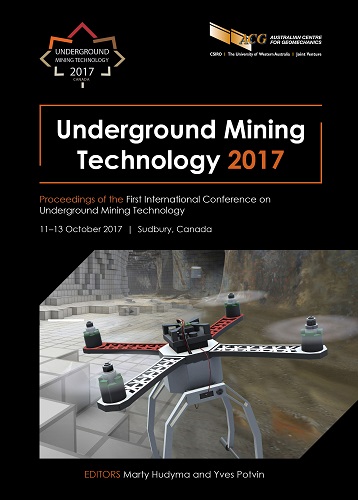Robust mine schedule optimisation

|
Authors: Whittier, M; Hauta, R; Fava, L |
DOI https://doi.org/10.36487/ACG_rep/1710_43_Whittier
Cite As:
Whittier, M, Hauta, R & Fava, L 2017, 'Robust mine schedule optimisation', in M Hudyma & Y Potvin (eds), UMT 2017: Proceedings of the First International Conference on Underground Mining Technology, Australian Centre for Geomechanics, Perth, pp. 533-545, https://doi.org/10.36487/ACG_rep/1710_43_Whittier
Abstract:
The identification of high-value, practical mine plans is a complex and challenging process. Mineral prices are a crucial factor to the value of a project and, due to the inherent volatility of the commodities market, also the most uncertain. Despite this reality, conventional planning processes don’t sufficiently account for the financial uncertainty associated with mining assets. As a consequence, life-of-mine schedules must often be extensively revisited as the fiscal climate changes. The inherent financial uncertainty of mining projects presents a substantial risk to stakeholders and without proper mitigation can easily reduce the perceived and real value of a mining asset. The risks associated with uncertainty can be mitigated through the creation of robust mine schedules. In this paper, two distinct approaches to creating robust, optimised long-term underground mine schedules will be presented. The Genetic Optimizer for Stochastic Problems (GOSP) method incorporates price distributions, rather than fixed projections, into the optimisation process. The Horizon method incorporates the concept of ’management flexibility’ into the process of schedule optimisation. As will be demonstrated by a case study, these methods, when integrated with the Schedule Optimization Tool (SOT), produce robust, high net present value schedules for underground mining operations.
Keywords: robust mine planning, schedule optimisation, financial uncertainty, genetic algorithm
References:
Amram, M & Kulatilaka, N 2000, ‘Stategy and shareholder value creation: the real options frontier’, Journal of Applied Corporate Finance, vol. 13, no. 2, pp. 18–28.
Bowman, C & Husain, AM 2004, Forecasting Commodity Prices: Futures Versus Judgement, International Monetary Fund, Washington, DC, viewed 16 May 2017,
Dooley, G & Lenihan, H 2005, ‘An assessment of time series methods in metal price forecasting’, Resources Policy, vol. 30, no. 3, pp. 208–217.
Jaimungal, J & Lawryshyn, Y 2011, ‘Incorporating managerial information into valuation of early stage investments’, Proceedings of the 15th Annual International Conference on Real Options: Theory Meets Practice, Real Options Group, Turku.
Labys, W 2006, Modelling and Forecasting Primary Commodity Prices, Ashgate Publishing Ltd., Farnham.
Luehrman, T 1998, ‘Strategy as a portfolio of real options’, Harvard Business Review, vol. 76, no. 5, pp. 89–99.
Maybee, B 2010, A Risk-based Evaluation Methodology for Underground Mine Planning, PhD thesis, Natural Resources Engineering, Laurentian University, Sudbury.
Maybee, B, Fava, L, Dunn, PG, Wilson, S & Fitzgerald, J 2010, ‘Towards optimum value in underground mine scheduling’, CIM Journal, vol. 1, no. 3, pp. 176–182.
Nawrocki, D 1999, ‘A brief history of downside risk measures’, The Journal of Investing, vol. 8, no. 3, pp. 9–25.
Saavedra-Rosas, J 2009, A Genetic Optimizer for Stochastic Problems with Applications to Orebody Uncertainty in Mine Planning, PhD thesis, Natural Resources Engineering, Laurentian University, Sudbury.
The World Bank 2017, Commodity Price Data (The Pink Sheets), The World Bank, Washington, DC, viewed 6 February 2017,
Triantis, A 2000, ‘Real options and corporate risk management’, Journal of Applied Corporate Finance, vol. 13, no. 2, pp. 64–73.
Van Rensburg, WCJ 1978, The Economics of the World’s Mineral Industries, McGraw-Hill, Johannesburg.
© Copyright 2025, Australian Centre for Geomechanics (ACG), The University of Western Australia. All rights reserved.
View copyright/legal information
Please direct any queries or error reports to repository-acg@uwa.edu.au
View copyright/legal information
Please direct any queries or error reports to repository-acg@uwa.edu.au